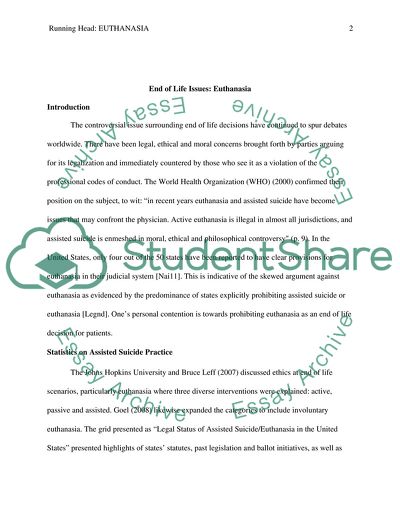Cite this document
(End of Life Issues: Euthanasia Essay Example | Topics and Well Written Essays - 2000 words - 2, n.d.)
End of Life Issues: Euthanasia Essay Example | Topics and Well Written Essays - 2000 words - 2. https://studentshare.org/social-science/1773654-euthanasia
End of Life Issues: Euthanasia Essay Example | Topics and Well Written Essays - 2000 words - 2. https://studentshare.org/social-science/1773654-euthanasia
(End of Life Issues: Euthanasia Essay Example | Topics and Well Written Essays - 2000 Words - 2)
End of Life Issues: Euthanasia Essay Example | Topics and Well Written Essays - 2000 Words - 2. https://studentshare.org/social-science/1773654-euthanasia.
End of Life Issues: Euthanasia Essay Example | Topics and Well Written Essays - 2000 Words - 2. https://studentshare.org/social-science/1773654-euthanasia.
“End of Life Issues: Euthanasia Essay Example | Topics and Well Written Essays - 2000 Words - 2”. https://studentshare.org/social-science/1773654-euthanasia.


